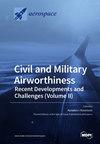通过释放燃料电池堆中储存在氢气中的能量为轻型飞机提供动力的可能性
IF 2.1
3区 工程技术
Q2 ENGINEERING, AEROSPACE
引用次数: 0
摘要
在这项工作中,我们研究了将以火花点火、往复活塞和以 AVGAS 为燃料的内燃机为动力的轻型螺旋桨驱动飞机转换为由以氢为燃料的质子交换膜燃料电池堆驱动的电动机驱动的飞机的可能性。我们的研究表明,低温储存氢气比高压储存氢气更好。与低温储氢罐相比,高压储氢罐极其沉重,轻型飞机无法接受。我们的研究表明,改装后的飞机(包括电池)并不比原来的飞机重,而且主要部件的布局使飞机在消耗氢气时重心移动较小。不过,我们承认,我们的燃料电池飞机无法储存与使用 AVGAS 的原版飞机相同的能量。因此,尽管燃料电池堆的效率明显高于内燃机,但燃料电池飞机的续航能力却有所下降。我们最重要的发现之一是,燃料电池堆需要通过热传导向周围环境耗散的能量明显大于内燃机。当我们试图以高电流密度运行燃料电池堆时,情况尤其如此。为了控制这一问题,我们在巡航阶段的策略是在电流密度较低的情况下以最高效率运行燃料电池堆。我们将燃料电池堆的大小设定为至少能产生足够的巡航功率,而当我们需要过剩功率时,我们会增加电池中储存的能量来弥补差额。本文章由计算机程序翻译,如有差异,请以英文原文为准。
The Possibility of Powering a Light Aircraft by Releasing the Energy Stored in Hydrogen within a Fuel Cell Stack
In this work, we examine the possibility of converting a light propeller-driven aircraft, powered by a spark-ignition, reciprocating piston, and internal combustion engine running on AVGAS, into one powered by an electric motor driven by a proton exchange membrane fuel cell stack running on hydrogen. Our studies suggest that storing hydrogen cryogenically is a better option than storing hydrogen under pressure. In comparison to cryogenic tanks, high-pressure tanks are extremely heavy and unacceptable for light aircraft. We show that the modified aircraft (including batteries) is no heavier than the original, and that the layout of the major components results in lower movement of the aircraft center-of-gravity as the aircraft consumes hydrogen. However, we acknowledge that our fuel cell aircraft cannot store the same amount of energy as the original running on AVGAS. Therefore, despite the fact that the fuel cell stack is markedly more efficient than an internal combustion engine, there is a reduction in the range of the fuel cell aircraft. One of our most important findings is that the quantity of energy that we need to dissipate to the surroundings via heat transfer is significantly greater from a fuel cell stack than from an internal combustion engine. This is particularly the case when we attempt to run the fuel cell stack at high current densities. To control this problem, our strategy during the cruise phase is to run the fuel cell stack at its maximum efficiency, where the current density is low. We size the fuel cell stack to produce at least enough power for cruise, and when we require excess power, we add the energy stored in batteries to make up the difference.
求助全文
通过发布文献求助,成功后即可免费获取论文全文。
去求助
来源期刊

Aerospace
ENGINEERING, AEROSPACE-
CiteScore
3.40
自引率
23.10%
发文量
661
审稿时长
6 weeks
期刊介绍:
Aerospace is a multidisciplinary science inviting submissions on, but not limited to, the following subject areas: aerodynamics computational fluid dynamics fluid-structure interaction flight mechanics plasmas research instrumentation test facilities environment material science structural analysis thermophysics and heat transfer thermal-structure interaction aeroacoustics optics electromagnetism and radar propulsion power generation and conversion fuels and propellants combustion multidisciplinary design optimization software engineering data analysis signal and image processing artificial intelligence aerospace vehicles'' operation, control and maintenance risk and reliability human factors human-automation interaction airline operations and management air traffic management airport design meteorology space exploration multi-physics interaction.
 求助内容:
求助内容: 应助结果提醒方式:
应助结果提醒方式:


